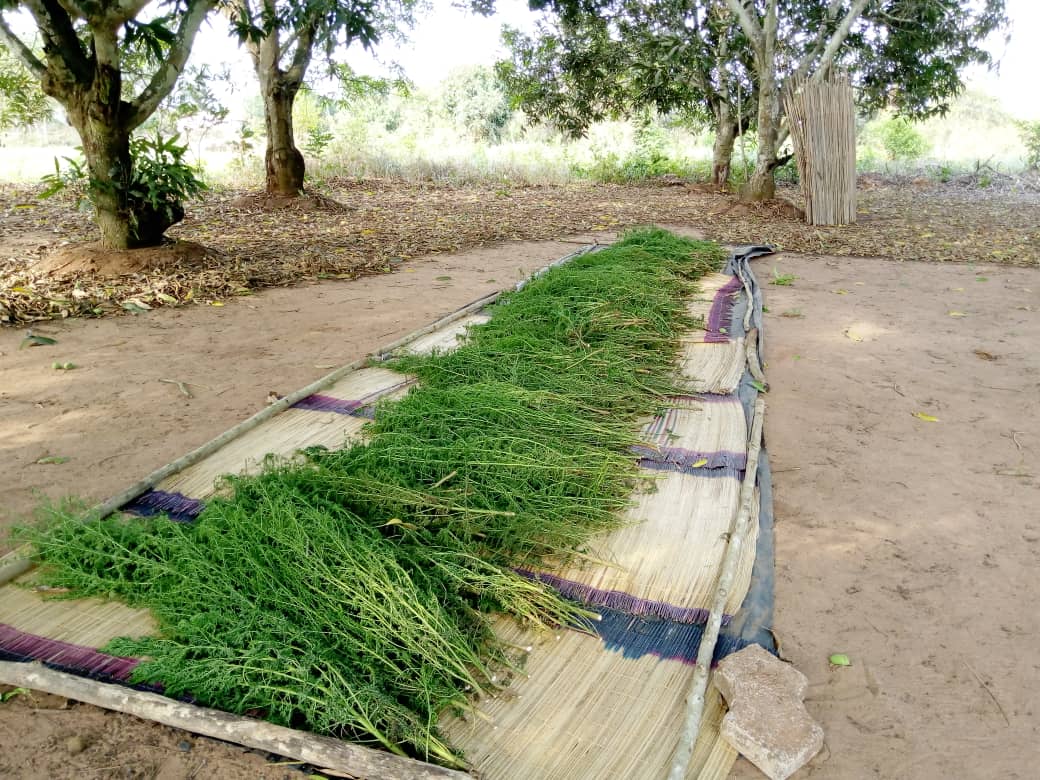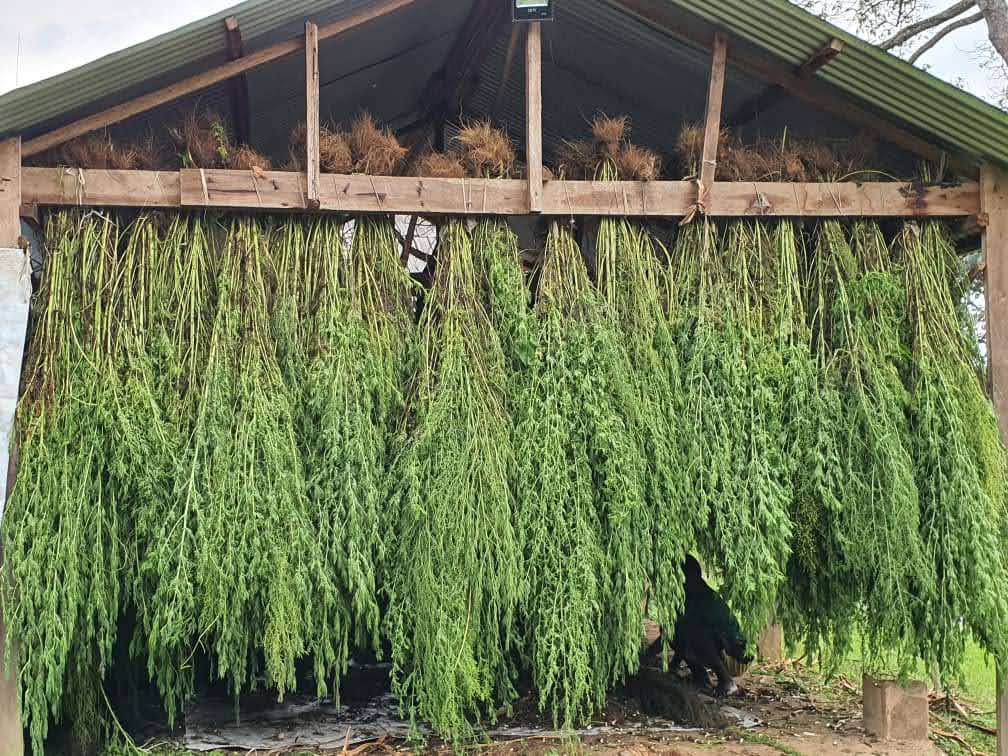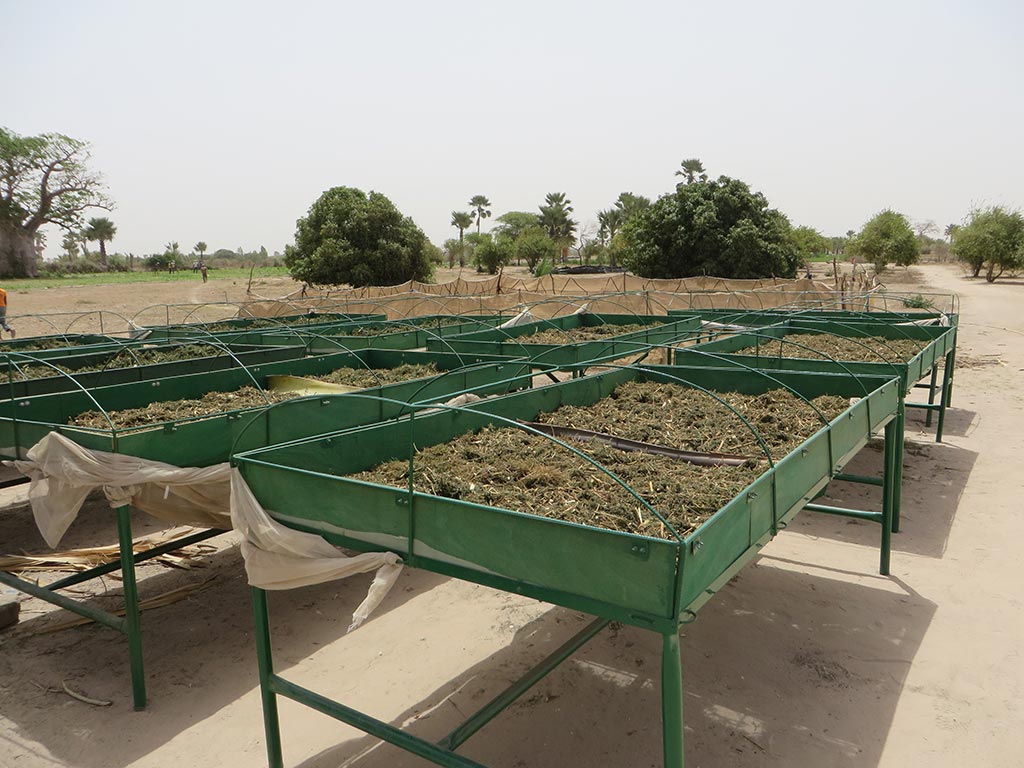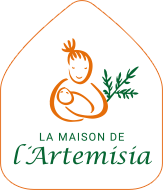Drying
Download in pdfReducing water content limits damage caused by mould and other microbial agents and thus ensures long shelf life of the end product.
Location :
WHO notes that harvested material should be dried immediately or as soon as practical.
The drying area should be protected from rain, insects, rodents, birds and other pests, livestock and domestic animals [1].
The drying area should be well ventilated and free of dust and other contaminants.
If the drying place is not close to the cultivation site, the harvest should be unpacked directly upon arrival.
Drying directly on the ground should be avoided!
If there is a concrete or cement floor, the medicinal plant material should be laid out on a clean tarpaulin, sheet or other clean piece of cloth.

Method :
WHO notes that drying method and temperature can have considerable influence on the quality of the resulting medicinal plant materials [1].
it is very important to harvest on a dry, sunny day and avoid harvesting in the rainy season.
The first days of drying in dry, sunny weather will ensure the green colour and strong odour of the Artemisia.
Unlike most medicinal plants, drying in direct sunlight does not affect the therapeutic properties of Artemisia.
On the contrary, studies show that drying in the sun is more effective than freezing, drying in the oven or in the shade, because:
- It allows the bioconversion of artemisinin (43% for oven- and shade-dried plants compared to 94% for sun-dried plants) [2].
- It increases the concentration of active molecules against malaria (catechins, flavonoids, polyphenols, scopoletin, coumarins, etc.) [4-8].
- It reduces the antioxidant power of the plant, which is desirable for treating malaria [2-3].
- It destroys harmful molecules such as vitamin C, which inhibit the destruction of plasmodium by oxidation.
- Sun kills bacteria on the leaves and slows down mould (which, like any anaerobic composting, destroys many useful molecules and introduces potentially toxic fungi).
However, plants should not be left in full sunlight for too long to avoid deterioration of the foliage and loss of medicinal substances. Therefore, limit the time needed for optimal drying (see below, test for branches that break cleanly when bent at right angles).
Drying indoors will, however, limit exposure to dust if dust levels are too high.
Drying conditions should be noted in the batch and cultivation record.
It is important not to harvest everything in one go but to rotate the drying process.
According to our estimates, 200 m² of drying area can be used to dry a quarter of a hectare of crop (5,000 plants), rotating the drying process.
Different cutting methods for drying :
A. Drying whole plants
- Spread the plants side by side on a tarpaulin or dry and clean mat, in the sun or under shelter.
OR hang the plants upside down under a shed roof or on a line out in the sun or under shelter.
Aerial parts of plants can also be arranged in bunches for hanging if care is taken to ensure that air can circulate through them. This is to ensure that they dry well indoors. - If plants dry outside, cover them at night to protect from animals and dew.
- Turn the plants once a day to ensure uniform drying, i.e. to avoid scorching (if sunlight and temperatures are too high) and decomposition (mould if humidity is too high) of the plant material.
This method is less demanding in terms of materials and labour, is better at avoiding mould, but drying takes longer.
You can expect to hang 1 tonne of Artemisia on ropes in a 600 m² drying area outside.

B. Drying in segments
- Cut the plants into segments of about 10 cm long.
- Spread them in thin layers 15 cm thick at the most on a tarpaulin or dry and clean mat, in the sun or under shelter.
Drying tables or racks can be constructed. They allow for more uniform and faster drying thanks to ventilation from below and make it possible to work in an upright position. Racks can be made of different materials, but very fine mesh or fabric is recommended. It is important to choose solid materials, which allow air to pass through but retain leaves which crumble into powder when drying.
Racks should be kept clean and in good condition [1].
Forced ventilation solar dryers can be used if the temperature is kept below 40°C.
This system appears to be fast and very effective in preserving the organoleptic characteristics of the plant (odour, flavour, colour).
Moreover, it protects against contaminants (dust, bird excrement, insects, …), allows ventilation and avoids night-time humidity.It is particularly recommended to add mechanical ventilation if drying takes place indoors.
- Turn the segments twice a day to ensure uniform drying, i.e. to avoid scorching (if sunlight and temperatures are too high) and decomposition (mould if humidity is too high) of the plant material.
This method is more demanding in terms of materials and labour, but enables faster drying.
(3-4 days of sunshine rather than 4-5 weeks for whole plants!)
It shortens the drying cycle and hence the drying area required per cultivation area.
It is very effective in dry climates.

Avoid cutting plants directly into segments if the weather is wet, as mould will develop very quickly!
This method of drying directly in segments requires a 24-hour rain free period before harvesting and dry and sunny weather.
For optimal drying in tropical climates (such as southern Benin), harvesting is done in dry, sunny weather and plants are first dried whole for several days. When they are less moist and the weather is dry, they are then cut into segments to speed up the drying process and are dried in a few days on racks.
Drying is optimal when branches break cleanly when bent at a right angle! Plant material should be turned sufficiently so that it does not overheat. The temperature should ideally remain below 40°C, and definitely below 60°C to preserve volatile compounds and essential oils of the plants. [9]
Phytosterols, saponins and fatty acids are not greatly affected by high drying temperatures. Only temperatures above 80°C show significant decreases. [10]
Dried crops should be packed in clean, dry bags as soon as possible to protect the product from deterioration and unnecessary exposure to possible pest attacks and other sources of contamination [1].
Refer to WHO recommendations for good storage practices.
Bibliography:
1. World Health Organisation. WHO guidelines on good agricultural and collection practices (GACP) for médicinal plants. 2003. Available at: https://www.who.int/medicines/publications/traditional/gacp2004/en/
2. Ferreira JF, Luthria DL. Drying affects artemisinin, dihydroartemisinic acid, artemisinic acid, and the antioxidant capacity of Artemisia annua L. leaves. Agric Food Chem. 2010 Feb 10;58(3):1691-8. doi: 10.1021/jf903222j.
3. J.C. Laughlin. Post-harvest Drying Treatment Effects on Amtimalarial Constituents of Artemiasia annua L.. ISHS Acta Horticulturae 576: International Conference on Medicinal and Aromatic Plants. Available at: https://wwwlib.teiep.gr/images/stories/acta/Acta%20576/576_47.pdf
4. XG Zheng, J Jin, YR Liang, Effect of ultraviolet-B irradiation on accumulation of catechins in Camellia sinensis. Afr J Biotechnol. 2008, 18, no 7
5. E Goto. K Hayashi, Effect of UV light on phytochemical accumulation of anthocyanin biosynthesis genes in red leaf lettuce. ISHS, doi 10.17660/Acta Hortic.2016.1134.24.
6. A Arakawa, Effect of UV light on anthocyanin synthesis in sweet cherry. J Japan Hort Sci, 1993, 62-3 543-546.
7. M Sun, X Gu J Tian, Change of secondary metabolites in leaves of Ginkgo biloba in response to UV-B irradiation. Innov Food Sci and Emerging Technologies 2010 11, 672-676
8. Hashim K. Mohammed Al-oubaidi*, Baan Munim Abdulrazzaq Twaij*, Aseel Salih Mohammed-Amee. Effect of (UV) light on production of medicinal compounds of Althaea officinalis L. in vitro. World Journal of Pharmaceutical Sciences ISSN (Print): 2321-3310; ISSN (Online): 2321-3086
9. M B Hassanpouraghdam , A Hassani ,. Drying Method Affects Essential Oil Content and Composition of Basil (Ocimum basilicum). J Essential Oil Bearing Plants, 2010, 13, 759-766.
10. Hong Ngoc Thuy Pham, Van Tang Nguyen, t. Effect of Extraction Solvents and Drying Methods on the Physicochemical and Antioxidant Properties of Helicteres.










